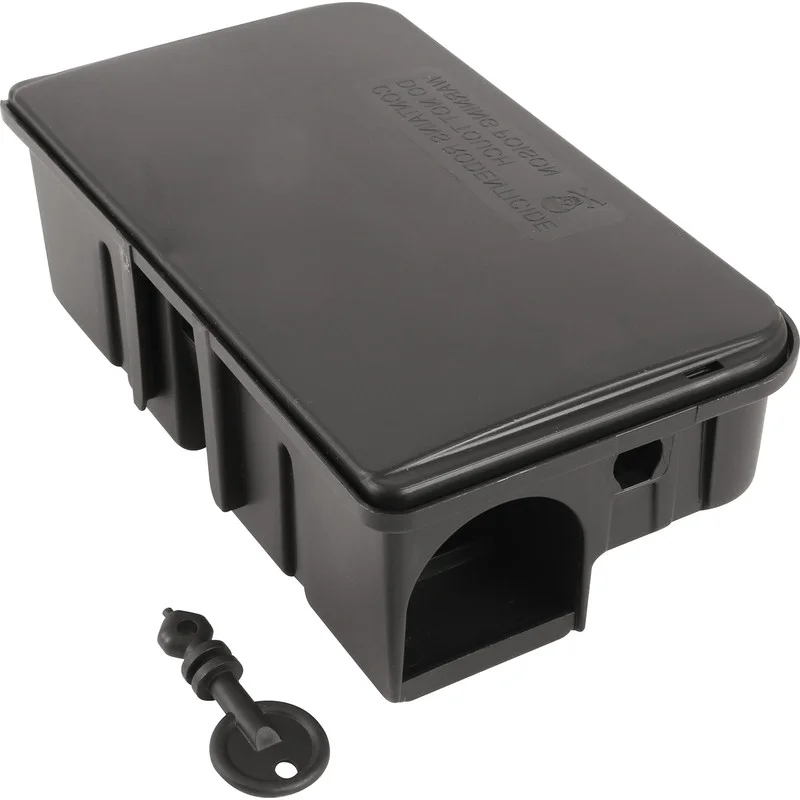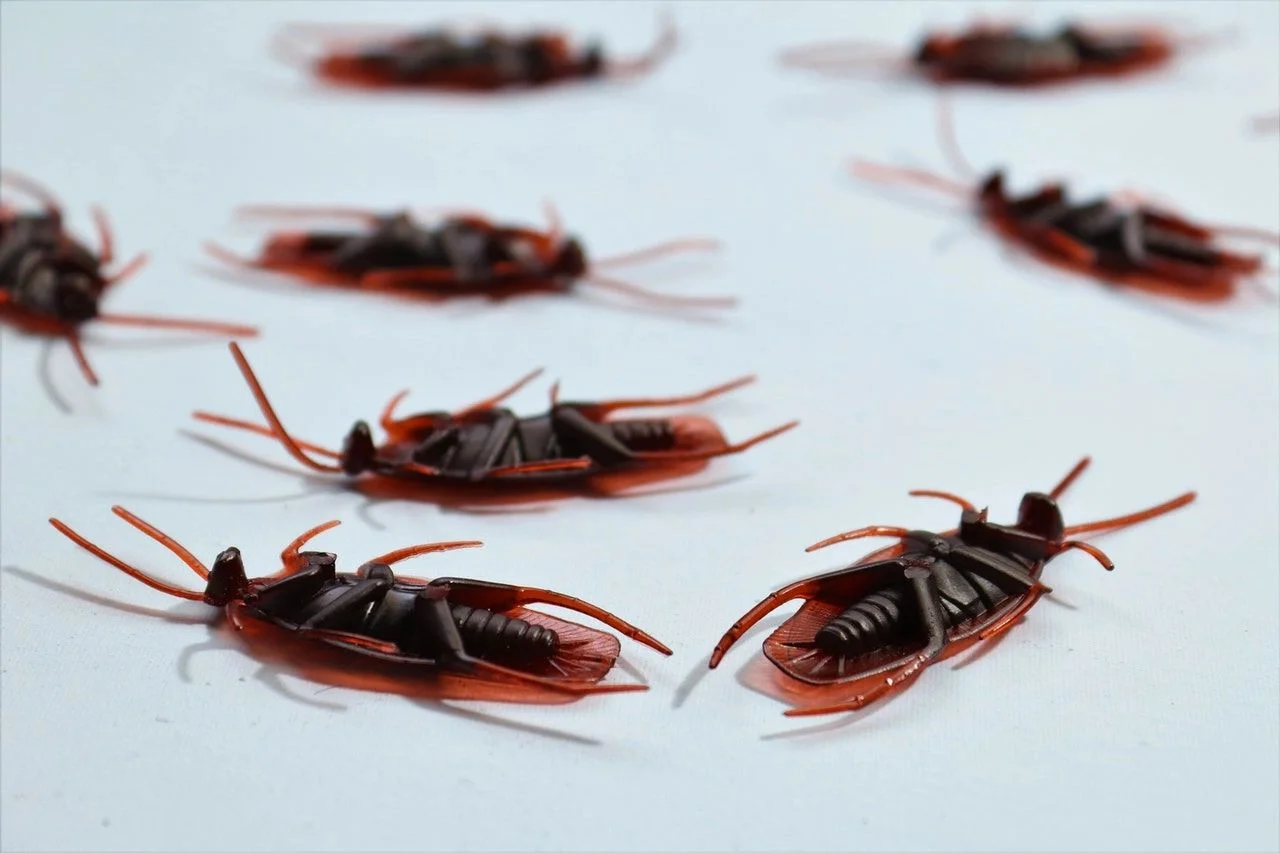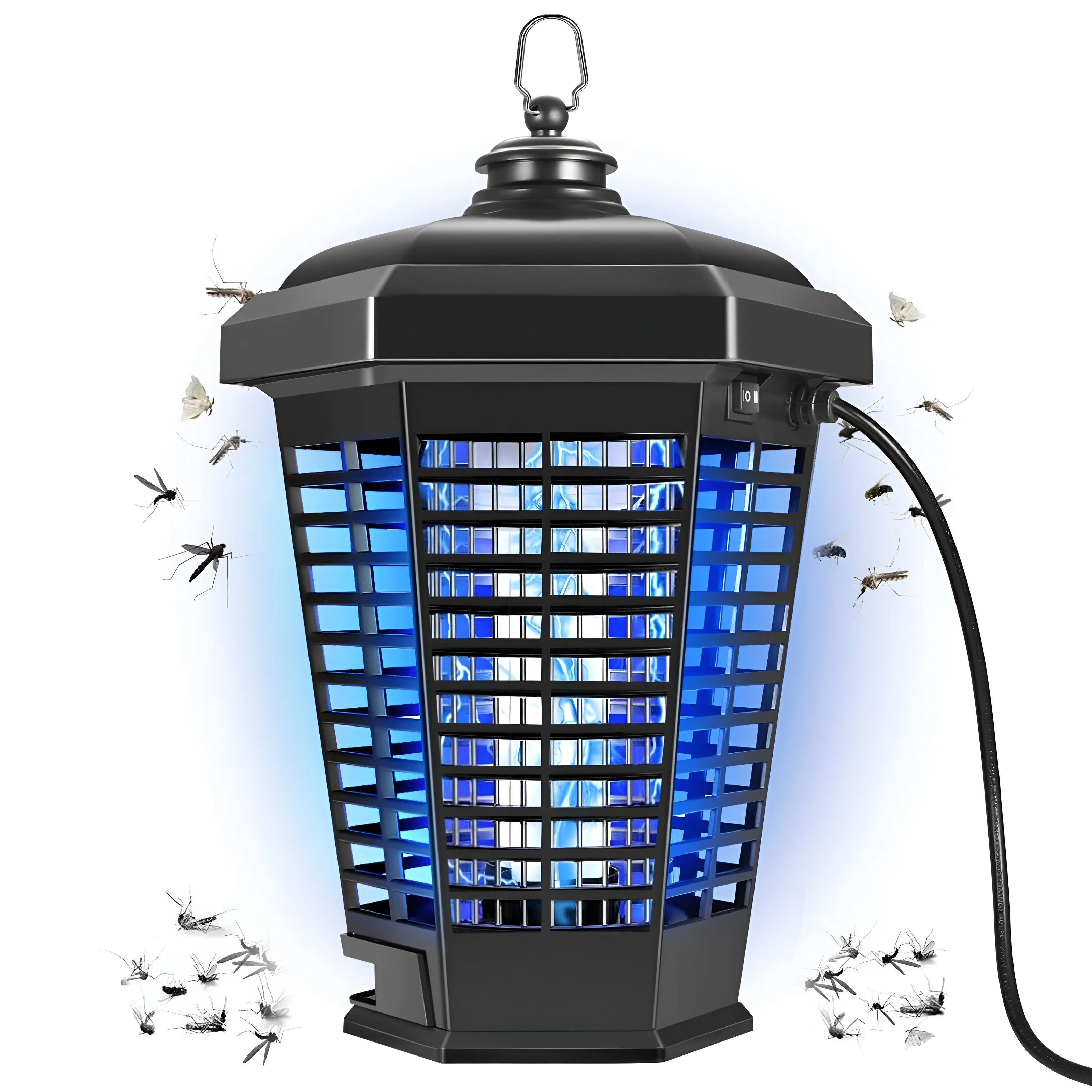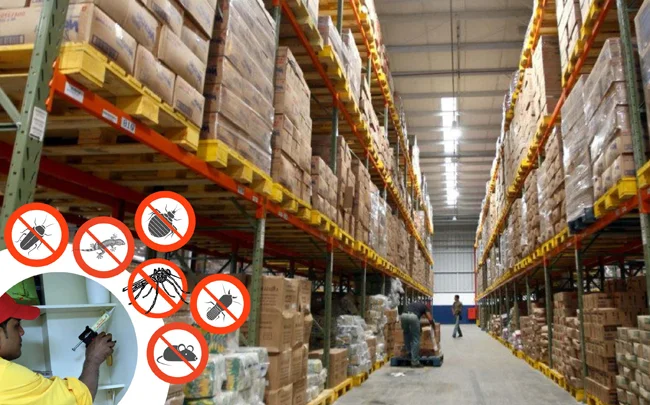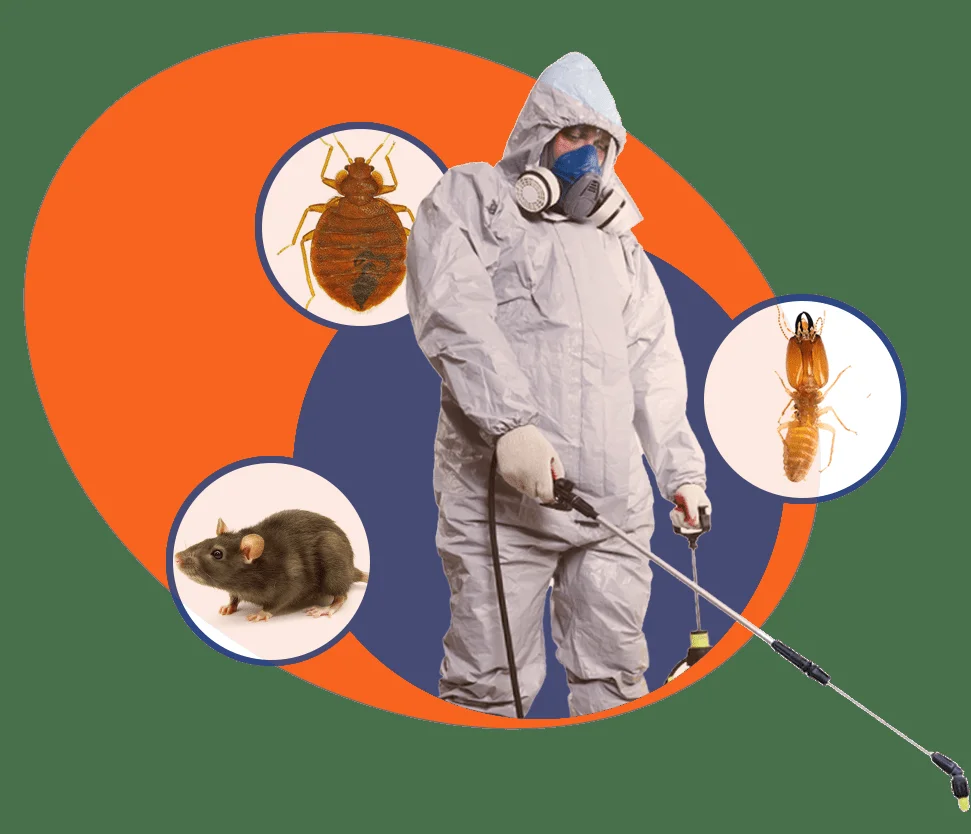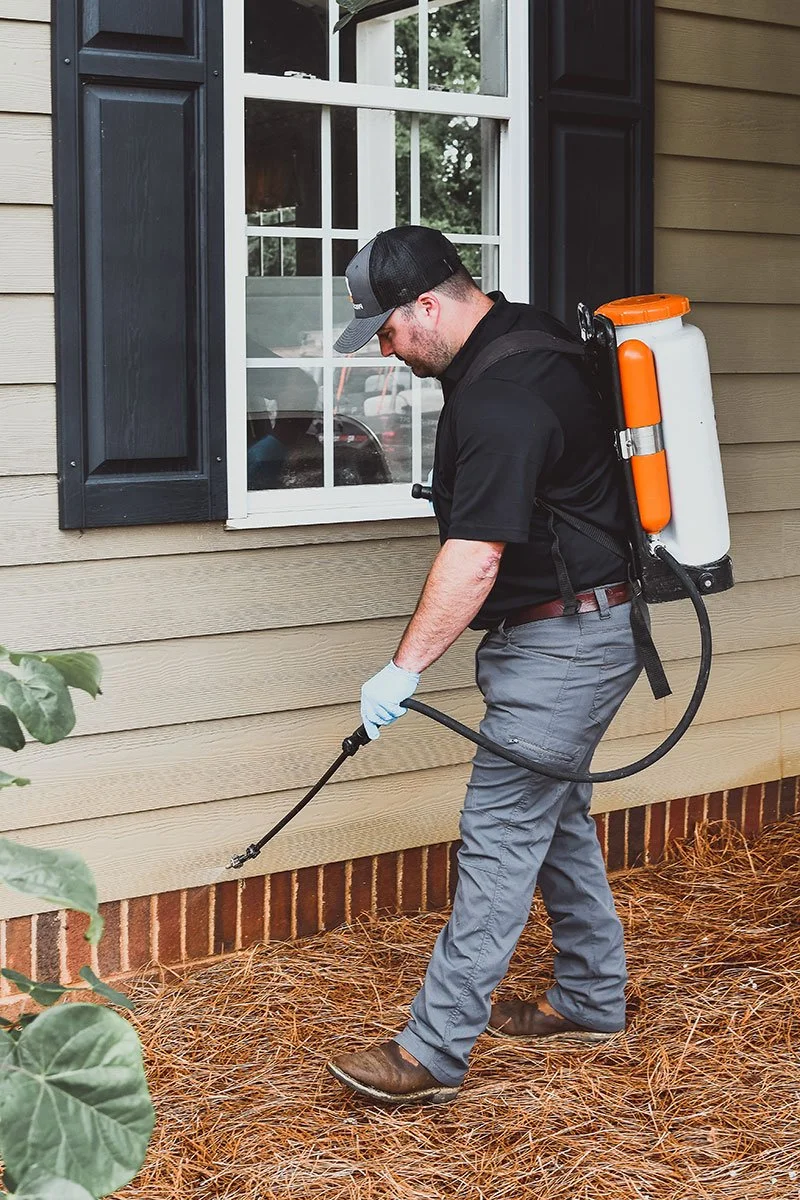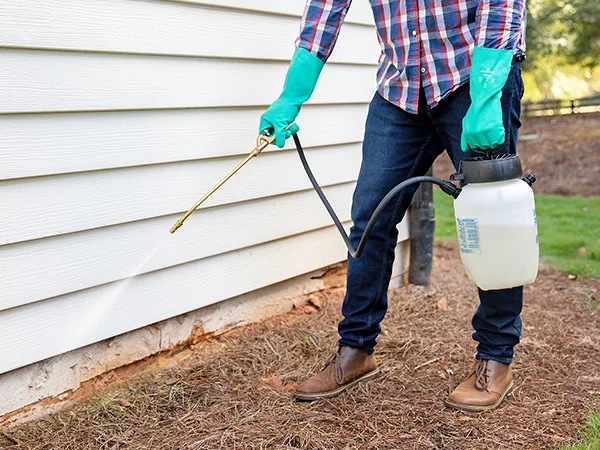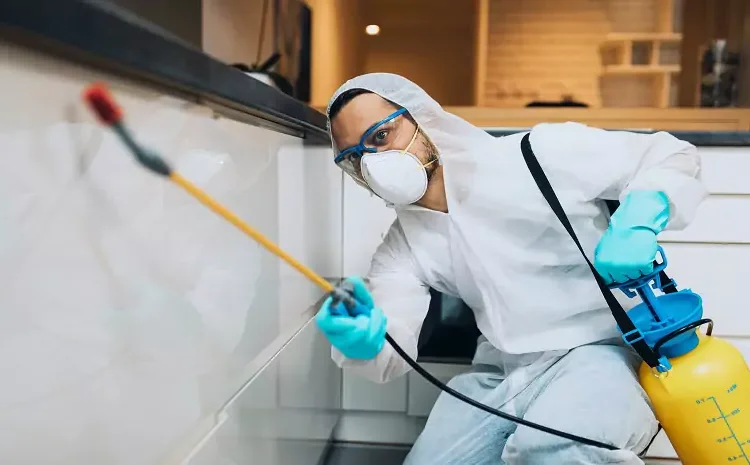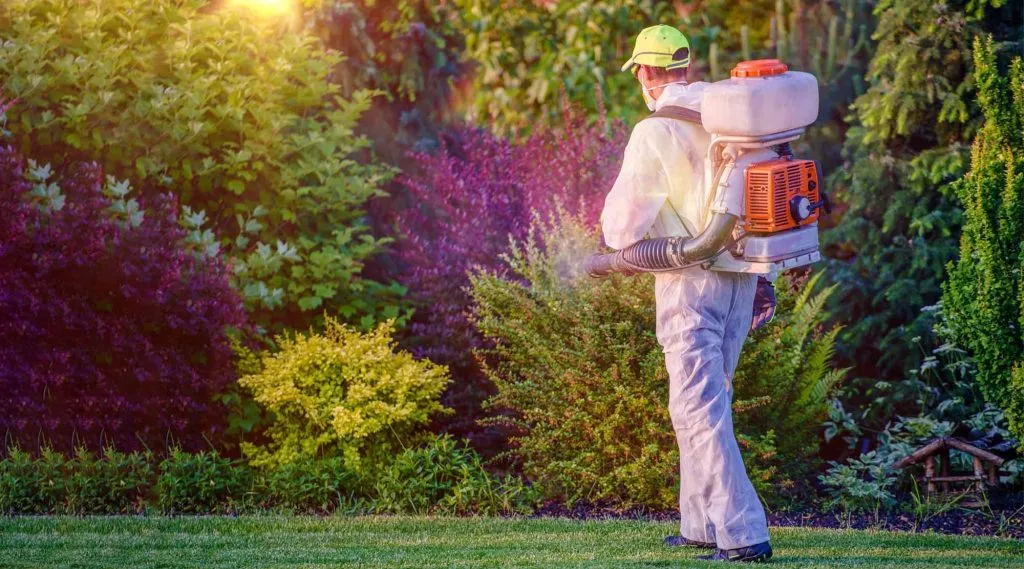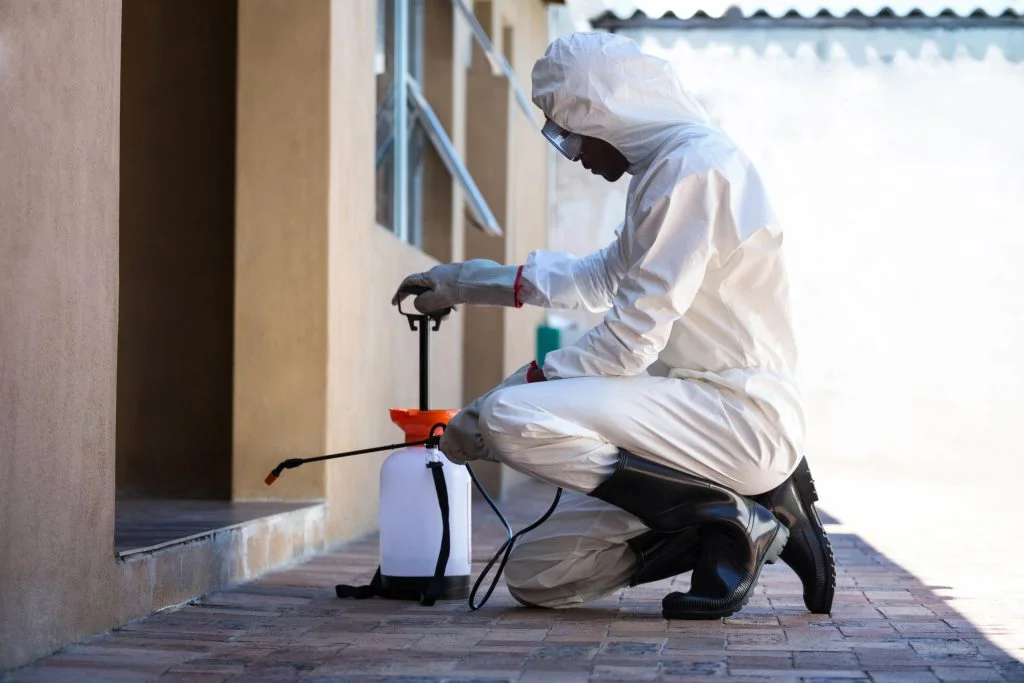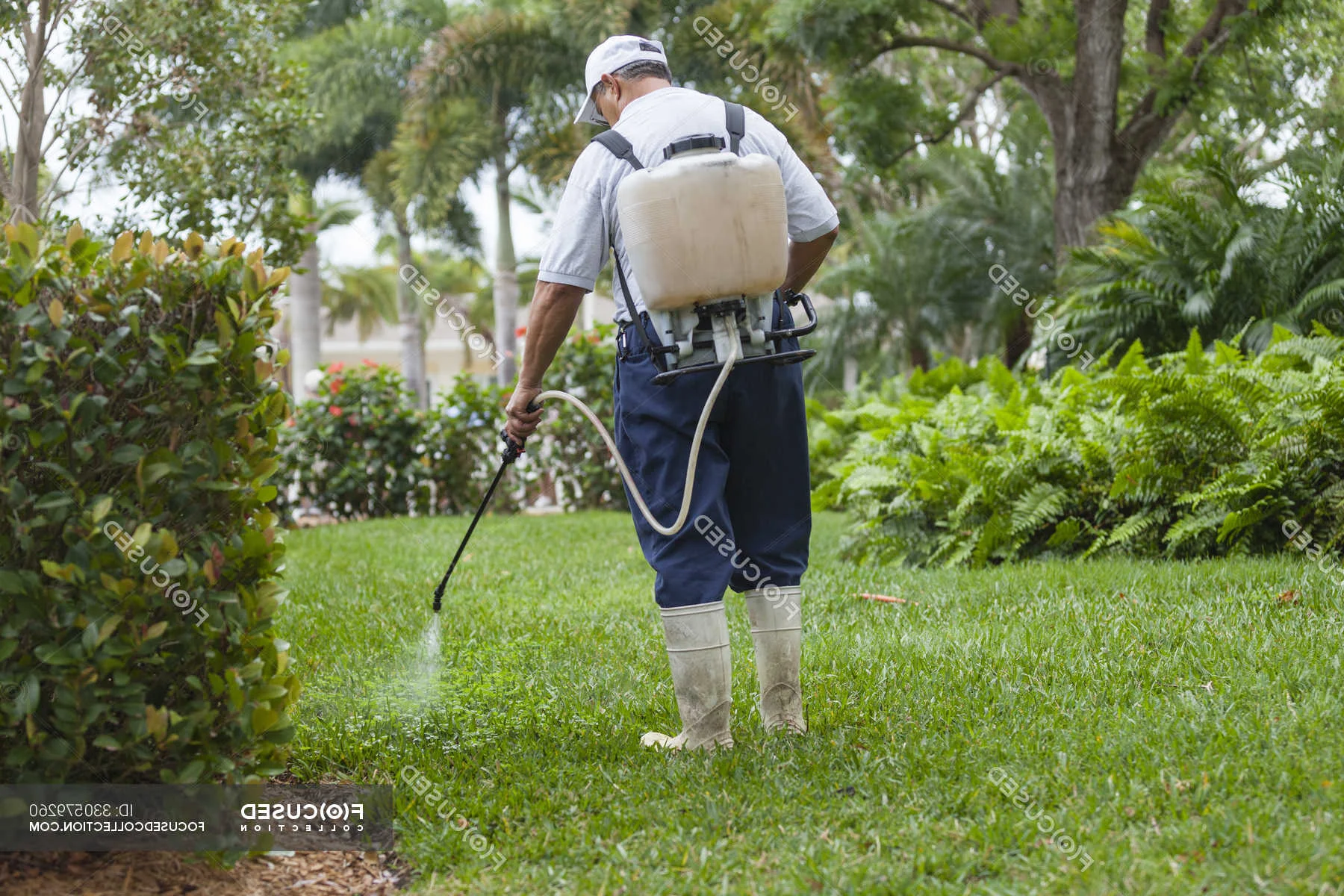Transit corridors present extraordinary pest control challenges
that combine the constant movement of people and goods with complex
underground infrastructure and continuous disturbance patterns that
create ideal conditions for pest proliferation. Properties located
near subway stations, bus terminals, train lines, and transportation
hubs face unique pest pressures from the massive human activity, food
waste generation, and interconnected tunnel systems that characterize
modern urban transit networks. From rodents exploiting subway tunnels
to flying insects attracted to transit lighting, transit corridor pest control
requires specialized understanding of transportation infrastructure
and urban mobility patterns.
Successful transit area pest management combines expertise in urban
pest behavior with deep knowledge of transportation systems and their
impact on surrounding residential and commercial properties. Professional exterminators
who specialize in transit corridor environments understand how subway
vibrations, train schedules, and passenger flows create unique pest
movement patterns and harborage opportunities throughout these dynamic
urban zones. In this comprehensive guide, we'll explore proven strategies
for protecting transit corridor properties using eco-friendly pest solutions
that work effectively in these high-activity transportation environments
while accommodating the operational requirements of critical urban
infrastructure.
Dealing with intense pest pressure from nearby transit infrastructure?
Our transportation corridor specialists provide emergency pest control
24/7 and comprehensive
residential pest protection designed for high-traffic transit areas.
Get transit-specific solutions now!
Unique Pest Control Challenges in Transit Corridors
Transit corridors create distinctive pest management challenges that
result from the complex interaction of transportation infrastructure,
human activity patterns, and urban environmental factors. Understanding
these unique dynamics is essential for effective transit corridor pest control:
-
Underground infrastructure connectivity Subway tunnels, utility
corridors, and underground transit infrastructure create extensive
pest highway networks that connect transit corridors to surrounding
properties, allowing rapid pest movement across large urban areas.
-
Continuous human activity and food sources Transit hubs generate
massive amounts of food waste from commuter dining, vendors, and
passenger activity, creating abundant and constantly replenished
food sources that support large pest populations.
-
Vibration and structural disturbance Train operations, subway
systems, and heavy vehicle traffic create continuous vibrations
that can damage building seals, create new entry points, and disturb
established pest control measures in nearby properties.
-
Climate-controlled environments Transit stations and terminals
provide year-round climate-controlled environments that offer ideal
conditions for pest breeding and survival, particularly during
extreme weather periods.
-
High population density and turnover Transit corridors experience
constant population flow with thousands of people daily, creating
continuous opportunities for pest introduction and dispersal through
luggage, packages, and personal belongings.
-
Construction and maintenance disruption Ongoing transit system
maintenance, upgrades, and construction projects regularly disturb
established pest populations and drive them toward nearby residential
and commercial properties seeking new harborage.
These factors make specialized pest prevention strategies essential
for transit corridor properties. Successful programs must address
both the direct pest pressure from transportation infrastructure and
the indirect effects of urban mobility systems on surrounding property
pest management requirements.
Common Pests in Transit Corridor Areas
Transit corridor environments support diverse pest populations that
exploit both the transportation infrastructure and the high human
activity levels characteristic of these urban zones. Understanding
these common transit area pests is crucial for developing effective
protection strategies:
Rodents
Strategic rodent control systems in transit corridor environment
Norway rats and house mice thrive in transit corridor environments,
exploiting subway tunnels, utility corridors, and the abundant
food sources generated by high passenger volumes. These intelligent
pests use underground infrastructure as protected highways to
move throughout urban areas while establishing colonies in the
warm, sheltered environments provided by transit facilities.
Rat bait stations and comprehensive rodent management in
transit areas require understanding the complex underground networks
that connect transportation infrastructure to surrounding properties,
creating continuous pest pressure that affects entire neighborhoods
adjacent to major transit lines and stations.
Cockroaches
Professional cockroach management near transportation hub
German and American cockroaches find ideal conditions in transit
corridor areas, particularly around food service establishments,
waste management areas, and the warm, humid conditions created
by underground infrastructure. The constant food availability
and climate-controlled environments support large cockroach populations
that spread throughout surrounding properties.
Roach pest control in transit areas requires comprehensive
approaches that address both the immediate property and the broader
transit infrastructure that serves as a source of continuous
pest pressure affecting residential and commercial properties
throughout the transportation corridor.
Flying Insects
Comprehensive flying insect management in transit corridor area
Various flying insects including flies, mosquitoes, and gnats
are attracted to transit corridor areas by the combination of
artificial lighting, food sources, and standing water often
found around transportation infrastructure. Underground areas
may harbor drain flies and other moisture-loving species, while
outdoor areas attract mosquitoes and other flying pests.
Mosquito control backyard and comprehensive flying insect
management in transit areas must address both the property-specific
breeding sites and the area-wide pest pressure created by transportation
infrastructure and the high volume of human activity in these
urban transportation zones.
Ants
Various ant species commonly invade properties near transit corridors,
attracted by the abundant food sources and disturbed soil conditions
created by transportation infrastructure. Pavement ants often exploit
cracks and gaps created by vibration and settling, while other species
follow scent trails from transit food sources to nearby properties.
Stored Product Pests
Indian meal moths, flour beetles, and other pantry pests may spread
from transit food vendors and storage areas to nearby residential
and commercial properties. The high volume of food handling and
storage in transit areas creates ideal conditions for stored product
pest establishment and dispersal.
Urban Wildlife
Pigeons, bats, and other urban wildlife often establish roosts and
nesting sites in transit infrastructure including elevated tracks,
station overhangs, and tunnel entrances. These animals can create
noise, sanitation, and health issues for nearby properties while
potentially carrying other pest species.
Occasional Invaders
Spiders, centipedes, sowbugs, and other occasional invaders may
be displaced by transit construction and maintenance activities,
driving them toward nearby properties seeking new harborage areas.
Vibration and ground disturbance can disrupt established pest populations
and create temporary invasion pressure.
Bed Bugs
The high volume of travelers and luggage movement through transit
corridors creates opportunities for bed bug introduction and dispersal.
Transit seating, waiting areas, and nearby accommodations may serve
as temporary harborage before bed bugs spread to residential properties
in the surrounding area.
Transportation Infrastructure Pest Impact
Transportation infrastructure creates complex pest management
challenges that extend far beyond the immediate transit facilities
to affect surrounding residential and commercial properties.
Pest control in warehouse and industrial facility management
techniques are often adapted for transit corridor environments
where large-scale infrastructure creates similar pest pressure
and movement patterns.
Professional assessment of transportation infrastructure impact
helps property owners understand how nearby transit systems affect
their pest management needs and develop appropriate response strategies
that address both direct and indirect effects of urban transportation
networks on pest activity and control requirements.
Underground System Effects
-
Subway tunnel networks Underground rail systems create extensive
pest highway networks that connect transit corridors to building
basements, utility systems, and foundation areas throughout the
surrounding urban area.
-
Utility corridor connectivity Shared utility tunnels and
underground infrastructure often connect transit systems to building
utilities, creating direct pathways for pest movement between transportation
facilities and nearby properties.
-
Drainage and water management Transit infrastructure often
affects local drainage patterns and water management, potentially
creating moisture issues that attract pests to surrounding properties.
-
Climate control systems Large HVAC systems serving transit
facilities can affect air pressure and environmental conditions
in nearby buildings, potentially influencing pest movement patterns
and harborage preferences.
Surface Transportation Impact
Bus terminals, train stations, and surface transit infrastructure
create concentrated areas of human activity, food waste, and continuous
disturbance that generate intense pest pressure affecting surrounding
properties through direct proximity and shared environmental conditions.
Construction and Maintenance Effects
Ongoing transit system construction, upgrades, and maintenance activities
regularly disturb established pest populations and environmental
conditions, creating temporary but intense pest pressure waves that
affect nearby properties as displaced pests seek new harborage areas.
High-Traffic Area Pest Management
Properties in transit corridors require specialized commercial pest control service
approaches that address the unique challenges of high-traffic
environments with continuous human activity, abundant food sources,
and constant introduction of potential pest carriers. Professional
management strategies account for the operational requirements
of businesses serving transit passengers while maintaining effective
pest control throughout these demanding environments.
High-traffic area pest management emphasizes prevention, rapid
response, and sustainable control methods that work effectively
despite the challenging conditions created by continuous passenger
flow, food service operations, and the complex environmental
factors present in active transportation corridors.
Passenger Flow Impact Management
-
Continuous introduction pressure Thousands of daily passengers
create ongoing opportunities for pest introduction through luggage,
packages, clothing, and personal belongings that may harbor various
pest species.
-
Food waste generation High-volume food consumption by transit
passengers creates continuous food waste streams that require intensive
management to prevent pest attraction and establishment.
-
Cleaning and maintenance coordination Pest control activities
must coordinate with intensive cleaning schedules and maintenance
operations required to manage high-traffic facility operations.
-
24/7 operational considerations Many transit corridors operate
continuously, requiring pest management approaches that work effectively
without disrupting critical transportation services or passenger
safety.
Food Service Coordination
Transit corridor properties often include restaurants, cafes, food
courts, and vendors that serve high volumes of passengers. Coordinated
pest management addresses both individual business needs and the
cumulative pest pressure created by concentrated food service operations
in transit environments.
Waste Management Integration
Effective pest control in transit corridors requires close coordination
with waste management systems that handle large volumes of passenger-generated
waste, food service waste, and operational debris that can attract
and support significant pest populations if not properly managed.
Residential Protection in Transit Corridor Areas
Residential properties in transit corridors require enhanced
residential pest treatment approaches that address the
intense pest pressure created by nearby transportation infrastructure
while maintaining comfortable, safe living environments for families.
Professional residential protection strategies account for the
unique challenges of living near high-activity transit systems
and their associated pest management requirements.
Transit area residential protection emphasizes robust perimeter
defense, comprehensive exclusion work, and ongoing monitoring
that can effectively counter the continuous pest pressure generated
by nearby transportation infrastructure and high-volume human
activity throughout these dynamic urban environments.
Enhanced Perimeter Protection
-
Reinforced exclusion systems Comprehensive sealing and exclusion
work that accounts for the higher pest pressure and potential
structural impacts from nearby transit operations including vibration
and settling effects.
-
Multiple barrier approaches Layered protection systems that
provide redundant pest exclusion capabilities to counter the intense
and continuous pest pressure characteristic of transit corridor
environments.
-
Underground connectivity management Specialized attention
to basement areas, utility connections, and foundation interfaces
that may connect to transit infrastructure through shared underground
systems.
-
Vibration-resistant installations Pest control installations
and exclusion work designed to maintain effectiveness despite the
continuous vibration and structural movement associated with nearby
transit operations.
Family-Safe Transit Area Solutions
Residential pest management in transit corridors emphasizes family-safe
treatment methods that provide effective protection while accommodating
the health and safety concerns of families living in high-density
urban environments with elevated pest pressure and environmental
challenges.
Noise and Activity Coordination
Pest control services coordinate with the noise, schedule, and activity
patterns associated with nearby transit operations to provide effective
treatment and monitoring without adding to the environmental stresses
that residents already experience from living near active transportation
infrastructure.
Protect your property from intense transit corridor pest pressure
with specialized transportation area management. Our experts provide
comprehensive residential pest protection designed for high-traffic
urban environments – schedule your transit area assessment today!
Vibration and Structural Impact Management
Transit corridor properties face unique challenges from continuous
vibration caused by trains, subways, and heavy vehicle traffic
that can compromise traditional pest control measures. Spraying around house foundation
and other pest control applications must account for the structural
movement and settling that can create new entry points and damage
existing exclusion work over time.
Professional pest management in transit areas includes specialized
approaches for maintaining effective pest control despite the
ongoing structural impacts of transportation operations that can
affect building integrity and create new pest access opportunities
throughout the surrounding area.
Vibration-Resistant Pest Control
-
Flexible exclusion materials Use of pest exclusion materials
and techniques designed to maintain effectiveness despite continuous
vibration and structural movement from nearby transit operations.
-
Reinforced installation methods Pest control installations
that account for structural stress and movement, ensuring long-term
effectiveness despite the challenging environmental conditions.
-
Regular maintenance protocols Enhanced inspection and maintenance
schedules that identify and address vibration-related damage to
pest control measures before it compromises protection effectiveness.
-
Adaptive treatment strategies Pest control approaches that
can adapt to changing structural conditions and new entry points
created by ongoing transit-related vibration and settling effects.
Foundation and Structural Monitoring
Comprehensive pest management includes monitoring of foundation areas,
structural joints, and building interfaces that may be affected by
transit vibration, ensuring that structural changes don't create
new pest access opportunities that compromise overall building protection.
Settlement and Crack Management
Professional services include ongoing assessment and treatment of
settling cracks, foundation shifts, and structural gaps that may
develop due to transit-related ground vibration and subsidence,
preventing these changes from becoming new pest entry points.
Emergency Response in Transit Corridor Areas
Transit corridor properties require specialized emergency response
capabilities that account for the complex access, coordination,
and safety requirements associated with active transportation
infrastructure. Urgent pest removal services in transit
areas must navigate the operational constraints of transportation
systems while providing rapid, effective response to pest emergencies
that could affect both property occupants and transit operations.
Emergency protocols for transit corridor properties include coordination
with transportation authorities, safety compliance with transit
operational requirements, and specialized approaches that address
pest problems without interfering with critical urban transportation
services that thousands of people depend on daily.
Transit-Coordinated Emergency Response
-
Transportation authority coordination Emergency response
protocols that coordinate with transit authorities, transportation
police, and operational staff to ensure safety and compliance
during pest control emergencies near active infrastructure.
-
Access and safety management Specialized procedures for
safely accessing properties near active transit infrastructure
while maintaining emergency response capabilities and protecting
both technicians and the public.
-
Operational impact minimization Emergency response strategies
designed to address pest crises without disrupting critical transportation
services or creating safety hazards for transit passengers and staff.
-
Multi-property coordination Emergency protocols that can
address pest problems affecting multiple properties in transit
corridors where underground connectivity may create area-wide
pest emergencies requiring coordinated response.
Common Transit Area Emergencies
Typical emergency situations in transit corridors include rodent
infestations spreading through underground connections, pest displacement
caused by transit construction or maintenance activities, large-scale
pest invasions following infrastructure disruptions, and any pest
situation that threatens public health or transit operations.
Public Safety Integration
Emergency pest control in transit areas includes coordination with
public safety protocols, emergency services, and public health authorities
to ensure that pest control activities support rather than complicate
broader public safety and transportation security requirements.
Eco-Friendly Pest Control for Transit Areas
Transit corridor properties benefit from IPM in garden
and comprehensive integrated pest management approaches that emphasize
sustainable, environmentally responsible methods particularly
important in high-density urban areas with intensive human activity.
Eco-friendly pest management in transit areas supports both individual
property protection and broader urban environmental health goals.
Green pest management strategies work effectively in transit environments
where environmental responsibility is important for community
health and where sustainable practices help address the complex,
long-term pest pressure created by permanent transportation infrastructure
and continuous human activity patterns.
Urban Environmental Responsibility
Our transit corridor pest control specialists prioritize environmental
stewardship through sustainable practices, green treatment methods,
and integrated approaches that support both effective pest control
and urban environmental health in high-activity transportation areas.
Sustainable Transit Area Management
| Green Method |
Transit Area Applications |
Urban Benefits |
| Integrated Pest Management (IPM) |
Comprehensive prevention programs that address transit-specific
pest pressure through monitoring, exclusion, and minimal chemical use.
|
Reduces environmental impact in high-density areas while
maintaining effective control despite challenging conditions.
|
| Mechanical Exclusion |
Physical barriers and exclusion systems that prevent pest access
without chemicals, particularly important in transit environments.
|
Permanent protection with zero environmental impact;
supports urban sustainability goals and air quality protection.
|
| Biological Controls |
Natural predators and beneficial species for appropriate areas
that can withstand the environmental pressures of transit corridors.
|
Supports urban ecosystem health and maintains natural
balance despite intensive human activity and infrastructure.
|
| Environmental Modification |
Habitat modification and environmental management that reduces
pest attraction while supporting transit area functionality.
|
Improves overall urban environmental conditions while
naturally discouraging pest establishment and reproduction.
|
| Smart Monitoring Systems |
Technology-based monitoring that provides early detection
and data-driven management in complex transit environments.
|
Optimizes treatment timing and reduces overall pesticide
use through precise, targeted intervention strategies.
|
Community Environmental Support
Eco-friendly pest management in transit corridors supports broader
community environmental goals including air quality protection,
sustainable urban development, and environmental justice considerations
particularly important in high-density areas with diverse populations.
24/7 Operations and Service Coordination
Transit corridors operate around the clock, requiring pest management
services that can coordinate with 24-hour pest control
operational requirements and provide service flexibility that
accommodates both transit schedules and property needs. Professional
services understand that transit area pest problems don't follow
business hours and require responsive support that works within
the complex operational constraints of active transportation systems.
Continuous operations coordination ensures that pest management
activities support rather than interfere with critical transportation
services while providing property owners and residents with reliable
protection despite the challenging environmental conditions created
by 24/7 transit operations and passenger activity.
Around-the-Clock Service Capabilities
-
Transit schedule coordination Service timing that coordinates
with transit operational schedules, maintenance windows, and passenger
flow patterns to minimize disruption while maximizing treatment
effectiveness.
-
Off-peak service optimization Utilizing low-traffic periods
and maintenance windows for intensive pest control activities
that might be difficult to perform during peak transit operations.
-
Emergency response availability 24/7 emergency response capabilities
that can address urgent pest situations regardless of transit
operational status or time of day, ensuring rapid intervention.
-
Continuous monitoring systems Advanced monitoring technologies
that provide around-the-clock pest activity surveillance and alert
capabilities in dynamic transit corridor environments.
Operational Safety Compliance
All pest control activities comply with transportation safety protocols,
worker safety requirements, and public safety standards that govern
work near active transit infrastructure, ensuring that pest management
supports rather than compromises transportation system safety and
security.
Multi-Stakeholder Coordination
Pest management in transit corridors requires coordination with multiple
stakeholders including transportation authorities, property managers,
business operators, residents, and regulatory agencies to ensure
comprehensive protection that meets everyone's needs and requirements.
Seasonal Management for Transit Corridor Properties
Spring (March-May)
- Increased pest activity with warming temperatures
- Transit construction season begins, displacing pests
- Spring cleaning and maintenance coordination
- Passenger volume increases with better weather
Focus: Enhanced monitoring and prevention as
pest activity increases and construction projects begin throughout
transit systems.
Summer (June-August)
- Peak tourist and passenger activity levels
- Maximum food service and waste generation
- Intensive construction and infrastructure projects
- Climate control system pest infiltration
Focus: Intensive management during peak activity
season with maximum pest pressure from human activity and construction.
Fall (September-November)
- Pest migration indoors for winter shelter
- Reduced construction activity but ongoing projects
- Back-to-school and return-to-office transit increases
- Preparation for winter heating season
Focus: Exclusion work and preparation for winter
pest management while addressing seasonal migration patterns.
Winter (December-February)
- Concentrated pest activity in heated transit areas
- Reduced outdoor pest pressure but increased indoor activity
- Holiday travel and passenger volume fluctuations
- Winter maintenance and infrastructure work
Focus: Interior treatments and monitoring systems
optimized for winter conditions and heating system operations.
Advanced Technology Integration for Transit Areas
Transit corridor pest management benefits from advanced technology
integration that provides real-time monitoring, predictive analytics,
and automated response capabilities suited to the complex, high-activity
environments characteristic of transportation areas. Pest control technician spraying
operations incorporate smart technology that optimizes treatment
timing and effectiveness while minimizing disruption to transit
operations and passenger activity.
Technology integration in transit areas focuses on systems that
can operate effectively despite the challenging environmental
conditions including vibration, electromagnetic interference,
and continuous human activity that characterize active transportation
corridors and infrastructure zones.
Smart Transit Monitoring Systems
-
Vibration-resistant sensors Monitoring devices designed
to maintain accuracy and reliability despite continuous vibration
from trains, subways, and heavy vehicle traffic in transit corridors.
-
High-traffic data analytics Advanced analytics that can
distinguish pest activity from the constant environmental changes
and disturbances created by high-volume transportation operations.
-
Integration with transit systems Coordination with transportation
infrastructure monitoring systems to optimize pest control timing
and avoid conflicts with critical transit operations.
-
Real-time alert networks Automated alert systems that provide
immediate notification of pest activity while filtering out false
alarms caused by transit operations and passenger activity.
Predictive Management Technology
Advanced predictive systems analyze transit schedules, passenger
patterns, construction activities, and environmental factors to anticipate
pest pressure changes and optimize prevention strategies throughout
dynamic transportation corridor environments.
Remote Monitoring Capabilities
Remote monitoring systems enable continuous oversight of pest control
effectiveness without requiring constant physical presence in challenging
transit environments, providing reliable data while accommodating
the access and safety constraints of active transportation infrastructure.
Public Health and Safety Coordination
Transit corridor pest management includes coordination with public
health authorities, transportation safety officials, and emergency
services to ensure that pest control activities support broader
public health and safety goals while maintaining the operational
integrity of critical urban transportation infrastructure.
Public Health Protection
-
Disease vector control Specialized attention to pest species
that may transmit diseases, particularly important in high-density
transit areas where large numbers of people may be exposed.
-
Food safety coordination Working with food service establishments
in transit areas to maintain health code compliance and prevent
foodborne illness risks associated with pest activity.
-
Air quality protection Pest control methods that protect
air quality in enclosed transit facilities and nearby properties
where ventilation systems may circulate treated air.
-
Emergency health response Coordination with public health
emergency response protocols during pest-related health crises
that could affect transit operations or passenger safety.
Transportation Safety Integration
All pest management activities comply with transportation safety
protocols and coordinate with transit security measures to ensure
that pest control work doesn't interfere with critical safety systems
or emergency response capabilities in transportation facilities.
Community Health Support
Transit corridor pest management supports broader community health
initiatives by reducing pest pressure in high-density areas and
coordinating with public health programs that address urban environmental
health challenges in transportation-adjacent neighborhoods.
Economic Impact and Business Coordination
Transit corridor businesses face unique challenges that require
specialized restaurant pest inspection and commercial
pest management approaches that account for the high customer
turnover, intensive food service operations, and elevated pest
pressure characteristic of transportation-adjacent commercial
establishments.
Professional pest management supports the economic vitality of
transit corridor businesses by maintaining the health code compliance,
customer comfort, and operational efficiency necessary for success
in these demanding, high-visibility commercial environments that
serve thousands of transit passengers daily.
Business Operation Support
-
High-volume service coordination Pest management that accommodates
the intensive operational requirements of businesses serving high
volumes of transit passengers with minimal disruption to service.
-
Health code compliance support Specialized attention to
health department requirements for food service establishments
in high-risk transit environments with elevated pest pressure.
-
Customer experience protection Discrete, effective pest
management that maintains customer comfort and confidence in
businesses serving discerning transit passengers and commuters.
-
Revenue protection strategies Pest management approaches
that prevent pest-related business disruptions, closures, or
reputation damage that could significantly impact revenue in
competitive transit corridor markets.
Tourism and Visitor Impact
Transit corridors often serve tourists and visitors who expect high
standards of cleanliness and pest management. Professional services
help maintain the positive image and visitor experience that supports
local tourism and economic development in transportation gateway areas.
Property Value Protection
Effective pest management helps protect property values in transit
corridors by maintaining the environmental quality and livability
that supports both residential desirability and commercial viability
in these strategically important urban locations.
Transit Corridor Success Stories
"Living above a subway station created unique pest challenges
until PestControl100 developed a specialized program that addresses
the underground connectivity and vibration issues. Our apartment
has been pest-free for over two years now."
- Maria and Carlos R., Transit Area Residents
★★★★★
"Our restaurant near the train station was struggling with persistent
pest issues until we found specialists who understand transit
corridor challenges. Their coordinated approach maintains our
health rating while accommodating our 24/7 operations."
- Ahmed T., Restaurant Owner
★★★★★
"Managing pest control for our entire mixed-use building near
the bus terminal required expertise in both commercial and residential
needs. PestControl100's transit corridor specialists solved our
complex multi-tenant pest management challenges."
- Jennifer L., Property Manager
★★★★★
Transportation Authority and Regulatory Coordination
Effective pest management in transit corridors requires understanding
and coordination with transportation authorities, regulatory agencies,
and public safety officials who govern work near critical infrastructure.
Professional services navigate the complex regulatory environment
while ensuring that pest control activities support rather than
compromise transportation system operations and public safety.
Regulatory Compliance Framework
-
Transportation safety compliance All pest control activities
comply with federal, state, and local transportation safety regulations
that govern work near active rail, subway, and transit infrastructure.
-
Environmental protection coordination Coordination with
environmental protection agencies to ensure that pest control
activities near water systems, air intake facilities, and sensitive
infrastructure meet environmental protection standards.
-
Public health authority coordination Working with public
health departments to ensure that pest management activities
support public health goals and comply with health protection
requirements in high-density transit areas.
-
Emergency services integration Coordination with emergency
services and disaster preparedness officials to ensure that pest
management supports rather than complicates emergency response
capabilities in critical infrastructure areas.
Permit and Authorization Management
Professional services understand the permit and authorization requirements
for work near transportation infrastructure and can help navigate
the approval processes necessary for comprehensive pest management
in regulated transit corridor environments.
Documentation and Reporting
Comprehensive documentation supports regulatory compliance and provides
the detailed records that may be required by transportation authorities,
public health agencies, and other regulatory bodies governing work
in sensitive transportation corridor areas.
Frequently Asked Questions
How does living near a subway or train station affect pest control needs?
Properties near transit infrastructure face significantly higher
pest pressure due to underground connectivity through tunnels
and utility systems, continuous food waste from high passenger
volumes, structural vibration that can create new entry points,
and 24/7 climate-controlled environments that support large
pest populations. These factors require enhanced protection
strategies including reinforced exclusion work, vibration-resistant
installations, and ongoing monitoring that accounts for the
unique challenges of transit corridor environments.
Can pest control work be done safely near active transportation infrastructure?
Yes, professional pest control services that specialize in
transit corridors understand the safety protocols, coordination
requirements, and regulatory compliance necessary for work near
active transportation infrastructure. This includes coordination
with transportation authorities, compliance with safety regulations,
and specialized procedures that ensure effective pest control
without compromising transportation operations or public safety.
How do underground transit systems create pest highways between buildings?
Underground transit systems create extensive networks of tunnels,
utility corridors, and infrastructure connections that provide
protected pathways for pest movement throughout urban areas.
These systems often connect to building basements, utility
systems, and foundation areas through shared underground infrastructure,
allowing pests to move freely between transit facilities and
surrounding properties. This connectivity requires comprehensive
pest management approaches that address both individual buildings
and the broader underground network.
What makes pest control more challenging in high-traffic transit areas?
High-traffic transit areas create challenging pest control
conditions including continuous introduction of pests through
passenger luggage and belongings, massive food waste generation,
24/7 operational requirements that limit treatment timing,
vibration and structural impacts that affect treatment installations,
and complex coordination requirements with transportation authorities
and multiple stakeholders. These factors require specialized
approaches and enhanced protection strategies compared to typical
urban pest management.
Are eco-friendly pest control methods effective in demanding transit environments?
Yes, eco-friendly methods can be highly effective in transit
environments when properly implemented as part of comprehensive
IPM programs. Methods like physical exclusion, biological controls,
environmental modification, and smart monitoring systems work
well in high-activity areas while supporting urban environmental
health goals. These approaches are often preferred in transit
areas due to public health considerations and the need for
sustainable solutions that can maintain effectiveness despite
continuous environmental challenges.
Don't let transit infrastructure create ongoing pest challenges for
your property. Trust PestControl100 for specialized transit corridor pest control
that addresses underground connectivity, vibration effects, and 24/7
operational coordination – contact us today
for expert transportation area solutions!

